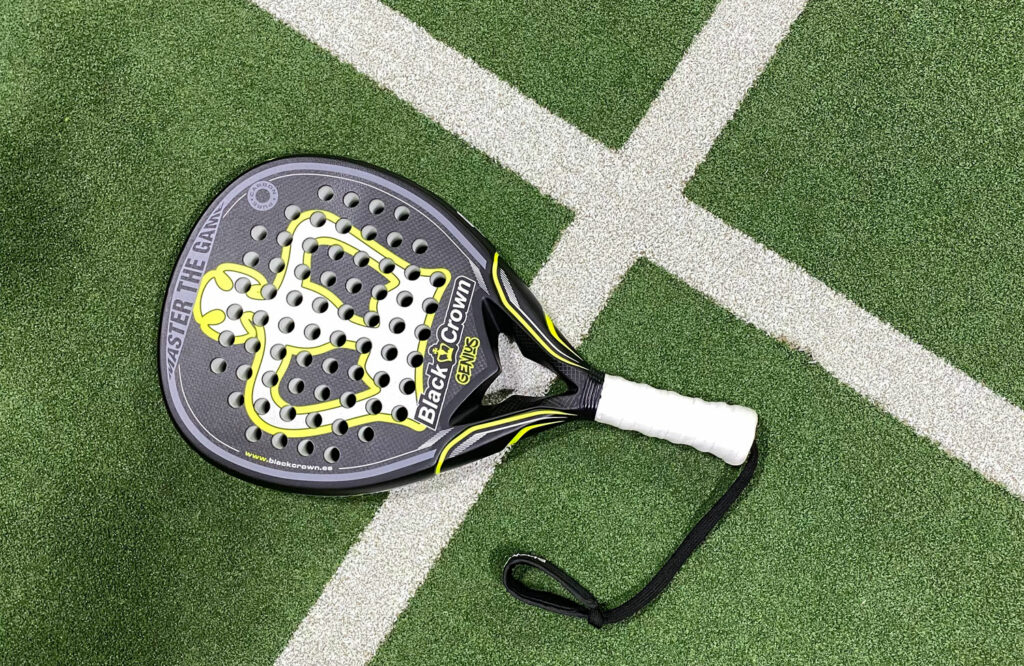The balance of the padel racket is one of the factors that most influence how a padel racket is experienced on the padel court. In this article, we will explain everything you need to know.
We start by defining what is meant by padel racket balance:
The balance of the padel racket is determined by how the weight is distributed between the lowest and highest points, more specifically the grip and the top of the racket.
So how does the balance affect your game? Let us explain with a practical example. Imagine holding a hammer in the grip in the lower part and swinging it. Then imagine holding the hammer in the upper part just below the head and swinging it. When was it easiest to swing? When you held it in the upper part, right?
It’s simple physics and it works the same with padel rackets. We will divide the balance into three categories: low, high, and medium.
Padel rackets with a low balance
Rackets that have the balance in the lower part, near the grip, has a low balance. Low balance is often associated with round-shaped rackets.
If you want to know more about the differences between padel racket shapes, we recommend that you read our article Padel Racket Shapes → What You Need To Know
Low balance padel rackets characteristics
In our example with the hammer, the low balance corresponds to gripping the hammer in the upper part, which makes it easier to swing. Low balance padel rackets are therefore easier to handle and comfortable to play with. They are easy to move and ideal for players seeking security and control in their shots. Rackets with low balance are also easier on the arm, which can reduce the risk of injury.
The disadvantage of low balance rackets is that you don’t get help from the racket to generate force in the attacking play. You need to generate all the power yourself, which for some players make it difficult to generate enough power in volleys and smashes.
Padel rackets with a high balance
Padel rackets that have the balance in the upper part of the racket has a high balance. High balance is often associated with diamond-shaped rackets.
High balance padel rackets characteristics
High balance is equivalent to gripping the hammer in the handle in the lower part, which makes it harder to swing. High balance rackets are therefore harder to handle on the padel court and offer less comfort. It takes more time to move the racket and get into the right positions. Also, a high balance racket tends to cause more injuries such as tennis elbow.
The main advantage of padel rackets with a high balance is that they generate great power in attacking play. When the weight at the top of the racket is set in motion it gives you the force needed for volleys and smashes. High balance padel rackets are therefore an excellent choice for attacking players with good technique.
Padel rackets with a medium balance
Padel rackets that have the weight distributed between the grip and the top has a medium balance. Medium balance is often associated with teardrop-shaped rackets but is also seen in round-shaped and diamond-shaped rackets.
Medium balance padel rackets characteristics
Padel rackets with medium balance offer more power in the attacking play than low balance rackets, but less than high balance rackets. Medium balance rackets are more maneuverable than high balance rackets but harder to handle than low balance rackets.
In the same way, medium balance rackets are slightly easier on the arm than high balance rackets, but not as safe to play with as low balance rackets.
This means that a medium balance padel rackets suit players looking for decent power in the attacking play without giving up too much control.
Summary
Padel rackets can have either low, high or medium balance. Low balance means that the weight is distributed against the grip while high balance means that the weight is in the upper part of the racket. Medium balance means that the weight is evenly distributed in between.
Low balance rackets are easier to handle but give you less power. High balance rackets generate more force in attacking play but is harder to handle and can increase the risk of injury. Medium balance rackets lie between these two extremes.
The type of balance to look for in a padel racket depends largely on your playing style. If you are a control type of player, a low balance padel racket may be suitable. If you are an attacking player, a high balance racket may suit you better. The all-round player should take a closer look at rackets with medium balance.
Don’t forget these are only general guidelines, and choosing a padel racket is about personal preferences.
Want to know more about what to consider before choosing your new padel racket? Read our comprehensive guide Choosing the Right Padel Racket – The Complete Guide
